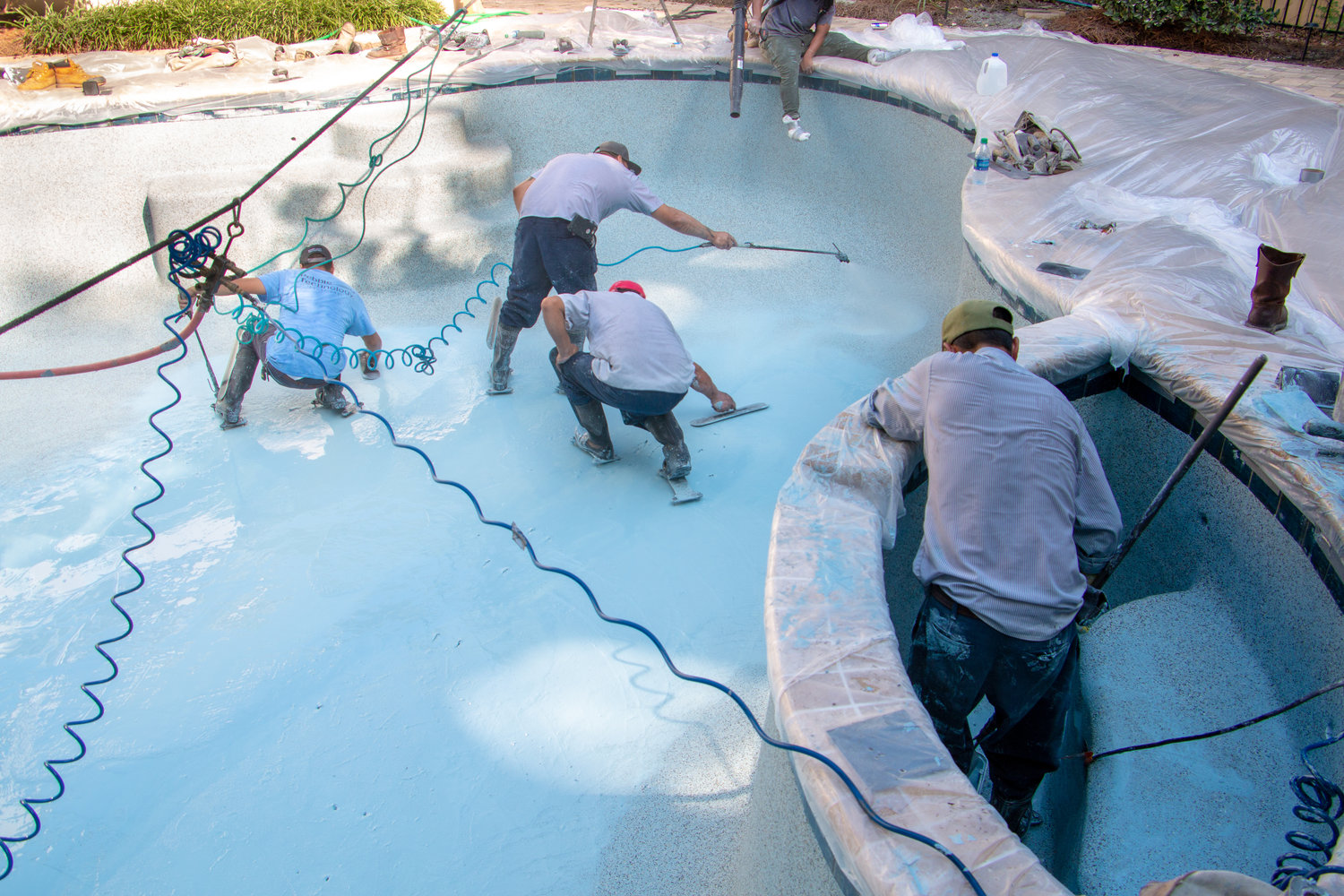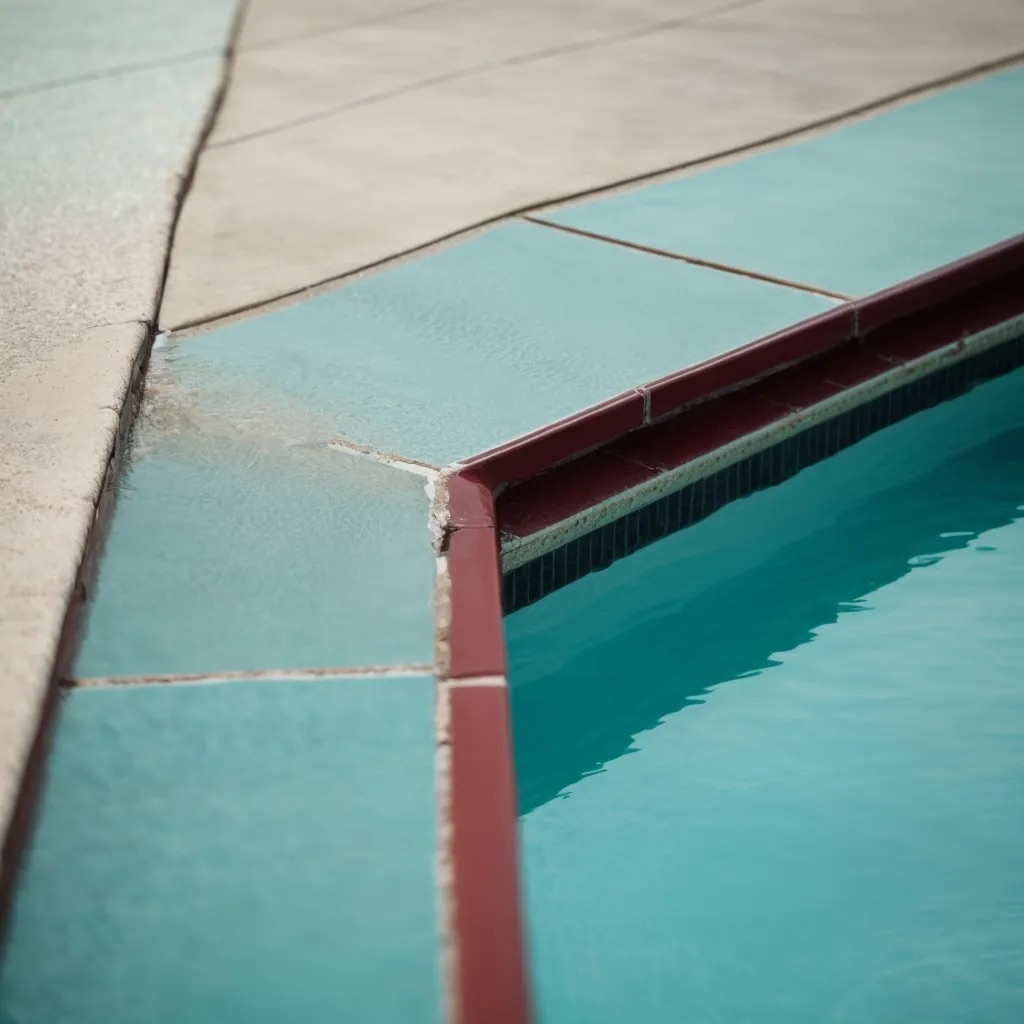Swimming pool tiles are an essential component of any pool, not only enhancing its aesthetic appeal but also serving a practical purpose. Over time, these tiles endure wear and tear from exposure to chemicals, sunlight, and weather elements. While pool tiles are designed to be durable and long-lasting, they may eventually show signs of deterioration, prompting the need for replacement.
In this blog post, we will explore the key indicators that your swimming pool tiles require replacement and delve into the process of swimming pool tile replacement. If you own a pool in Las Vegas and want to maintain its beauty and functionality, it is crucial to understand when and how to replace your pool tiles.
The Importance of Pool Tile Maintenance
Before delving into the signs of deterioration and replacement, let’s take a moment to appreciate the significance of regular maintenance. Properly maintained pool tiles not only add elegance to your pool but also protect its structure from water damage and prevent algae and mold growth.
Routine cleaning and maintenance, such as brushing and chemical treatments, can extend the lifespan of your pool tiles. However, despite the best efforts, there comes a time when replacement becomes necessary. Recognizing the telltale signs is crucial in ensuring timely replacement and preventing any further damage.
Signs that Your Swimming Pool Tiles Need Replacement
Cracks and Chips
One of the most obvious signs that your pool tiles require replacement is the presence of cracks and chips. Over time, exposure to fluctuating temperatures and pool chemicals can cause the tiles to weaken, leading to cracks and chips. Not only do these imperfections mar the visual appeal of your pool, but they can also become safety hazards for swimmers.
If you notice even minor cracks or chips, addressing them promptly before they worsen is essential. Ignoring the issue can lead to further tile damage and potentially compromise the structural integrity of your pool.
Faded and Discolored Tiles
Exposure to harsh sunlight and pool chemicals can cause pool tiles to fade and lose their original color. Discolored tiles can make your pool appear outdated and uninviting. While regular cleaning and maintenance can help prevent discoloration to some extent, long-term exposure can be challenging to rectify.
If your pool tiles have lost their luster and show signs of significant discoloration, it might be time to consider a replacement. Upgrading to new, vibrant tiles can breathe new life into your pool and make it look as good as new.
Loose or Detached Tiles
As pool tiles age, the adhesive holding them in place can weaken, leading to loose or detached tiles. When tiles become loose, they not only disrupt the appearance of your pool but also create potential safety hazards. Swimmers could trip on loose tiles or become injured by sharp edges.
If you notice any tiles that are loose or have come off completely, it’s essential to address the issue immediately. A professional pool tile replacement service can inspect the extent of the problem and replace the affected tiles securely.
Persistent Algae and Mold Growth
While algae and mold growth can be prevented through proper maintenance, persistent growth on pool tiles might indicate deeper issues. As tiles age, they may develop small cracks or imperfections that provide ideal conditions for algae and mold to thrive.
If you find keeping your pool tiles free from algae and mold challenging, even after regular cleaning, it may be time to consider a replacement. New tiles with a smooth surface are less likely to harbor these unwelcome guests and will make it easier to maintain a clean pool.
Grout Deterioration
Grout serves as the adhesive that keeps pool tiles in place and prevents water from seeping into the foundation. However, grout can deteriorate over time due to exposure to chemicals, temperature changes, and wear.
When grout deteriorates, it leaves gaps between the tiles, making them susceptible to movement and further damage. If you notice crumbling or missing grout lines, it’s essential to address the issue promptly. Replacing the grout or opting for a complete tile replacement, if necessary, can help ensure the structural integrity of your pool.
Outdated Design and Style
Sometimes, the need for pool tile replacement is not solely due to damage or deterioration but rather the desire for a fresh and updated look. Pool tile trends evolve over the years, and what might have been stylish a decade ago could now appear outdated.
If your pool tiles no longer align with your aesthetic preferences or the overall design of your outdoor space, consider upgrading to modern and visually appealing tiles. A pool tile replacement can completely transform the look of your pool area and create a more inviting space for you and your guests.
The Process of Swimming Pool Tile Replacement
Replacing swimming pool tiles is a task best left to professionals who have the expertise and experience to ensure a successful and long-lasting outcome. The process typically involves the following steps:
Inspection and Preparation
The first step in pool tile replacement is conducting a thorough inspection of the existing tiles. A qualified pool tile replacement company will assess the condition of the tiles, grout, and the overall state of the pool’s structure. They will also take note of any loose or damaged tiles that require immediate attention.
Once the inspection is complete, the pool area is prepared for the replacement process. This involves draining the pool to an appropriate level to access the tiles and create a safe and dry working environment.
Removal of Old Tiles
With the pool drained, removing the old and damaged tiles is the next step. The process requires careful handling to avoid any further damage to the surrounding tiles and the pool’s structure. Specialized tools and techniques detach the tiles and carefully clean the area.
Surface Preparation
After removing the old tiles, the pool surface is thoroughly cleaned and prepared for the installation of the new tiles. The surface must be smooth and free from any debris, ensuring proper adhesion of the new tiles.
Tile Installation
The actual tile installation process begins with applying a suitable adhesive to the back of each tile. The tiles are then carefully placed on the prepared surface, aligning perfectly and creating a visually pleasing pattern. Experienced professionals use their expertise to achieve a seamless and attractive tile installation.
Grouting
Once the tiles are in place, fresh grout is applied to the gaps between the tiles. Grouting not only enhances the pool’s visual appeal but also ensures a watertight seal that prevents water from seeping into the foundation.
Curing and Finishing
After the installation and grouting, the pool must be given adequate time to cure. This typically involves filling the pool with water and setting the tiles and grout properly. The curing period may take a few days, during which time the pool should not be used to ensure the best results.
Once the tiles are fully cured, the pool is ready for use. A final inspection is conducted to ensure the replacement process is successful and the pool tiles are securely in place.
Swimming pool tile replacement is a crucial aspect of pool maintenance and ensures the longevity and beauty of your pool. Recognizing the signs of tile deterioration and addressing them promptly can save you from costly repairs and potential safety hazards. Whether your pool tiles show cracks, discoloration, or signs of detachment, hiring a professional pool tile replacement company is essential to handle the process efficiently and effectively.
If you own a pool in Las Vegas, maintaining the allure and functionality of your outdoor oasis is of utmost importance. By investing in timely pool tile replacement, you can continue to enjoy a stunning and well-maintained swimming pool for years to come, creating cherished memories with family and friends in the shimmering waters of your private paradise.
Key Takeaways:
- Swimming pool tiles are essential for both aesthetics and structural integrity but may eventually require replacement due to wear and tear.
- Regular maintenance, such as cleaning and chemical treatments, can extend the lifespan of pool tiles.
- Signs that your swimming pool tiles need replacement include cracks, chips, fading, discoloration, loose or detached tiles, persistent algae and mold growth, and deteriorating grout.
- Promptly addressing tile issues can prevent further damage to your pool and ensure the safety of swimmers.
- Pool tile replacement is best left to professionals who can inspect the pool, remove old tiles, prepare the surface, install new tiles, and apply fresh grout for a seamless finish.
- A well-executed tile replacement can transform the look of your pool, creating a more inviting and modern outdoor space.
- Regularly updating your pool tiles can keep your pool area stylish and aligned with current design trends.
- By investing in professional pool tile replacement, Las Vegas pool owners can prolong the life of their pool and enjoy its beauty and functionality for years to come.





